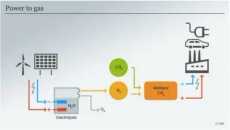Solar Panel Forecast to Reach USD 317.41 Billion by 2031, Growing at a CAGR of 8.03%
Introduction
The Solar Panel Market is experiencing robust growth as the demand for clean, renewable energy continues to rise. With growing concerns over climate change, energy security, and fossil fuel dependency, solar energy has emerged as a key player in the global energy transition. According to recent research, the global solar panel was valued at USD 170.43 billion in 2023 and is expected to grow to USD 317.41 billion by 2031, registering a compound annual growth rate (CAGR) of 8.03% over the forecast period from 2024 to 2031.
The increasing adoption of solar panels across residential, commercial, and industrial sectors, coupled with advancements in solar technology and supportive government policies, is driving expansion. This press release explores the current trends, segmentation, and growth drivers that are shaping the future of the solar panel industry.
Overview
Solar panels, or photovoltaic (PV) panels, convert sunlight into electricity through the photovoltaic effect. They have become a vital component of the renewable energy landscape, offering a clean and sustainable solution to meet the world’s growing energy demands. The shift towards solar energy is being fueled by a combination of technological advancements, cost reductions, and the urgent need to reduce carbon emissions.
The global push for renewable energy is creating unprecedented demand for solar panels. Governments worldwide are implementing policies to promote the adoption of solar power, including tax incentives, subsidies, and renewable energy targets. In addition, solar energy is becoming increasingly cost-competitive compared to traditional fossil fuels, making it a more attractive option for residential, commercial, and industrial applications.
Segmentation
The solar panel can be segmented by grid type (on-grid, off-grid), technology (thin film, crystalline silicon, others), application (residential, commercial, industrial), and region.
By Grid Type:
- On-Grid Solar Panels: On-grid solar panels are connected to the local electricity grid, allowing excess energy generated by the solar system to be fed back into the grid. These systems are popular in regions with reliable grid infrastructure and are widely adopted by homeowners, businesses, and utilities. On-grid solar systems benefit from net metering, where users receive credits for excess energy supplied to the grid, reducing overall energy costs.
- Off-Grid Solar Panels: Off-grid solar systems operate independently of the electricity grid and are designed to provide energy to locations that lack access to grid power. These systems rely on battery storage to store excess energy for use during periods when solar generation is low. Off-grid solar panels are particularly valuable in remote areas, rural regions, and developing countries where access to electricity is limited or unreliable.
By Technology:
- Thin Film Solar Panels: Thin film solar technology is made from layers of semiconductor materials, such as amorphous silicon or cadmium telluride, deposited onto a substrate. Thin film panels are lightweight, flexible, and perform well in low-light conditions. They are particularly suited for large-scale solar farms and commercial applications where space constraints are less of an issue. The demand for thin film solar panels is expected to grow, particularly in utility-scale installations.
- Crystalline Silicon Solar Panels: Crystalline silicon solar panels are the most widely used and well-established solar technology. They are available in two types: monocrystalline and polycrystalline. Monocrystalline panels are known for their higher efficiency and performance, while polycrystalline panels offer a cost-effective alternative. Crystalline silicon technology dominates the residential and commercial sectors, and its share is expected to remain significant throughout the forecast period due to continuous improvements in efficiency and cost.
- Other Solar Technologies: Emerging technologies, such as perovskite solar cells, are gaining attention for their potential to revolutionize the solar industry. These technologies promise higher efficiency rates, lower production costs, and more versatility compared to traditional silicon-based panels. While still in the development stage, these innovative technologies could play a significant role in the future of the solar .
By Application:
- Residential Solar Panels: The residential sector represents a significant portion of the solar panel , as homeowners seek to reduce their electricity bills and contribute to environmental sustainability. Residential solar installations are particularly popular in regions with high electricity costs and favorable government incentives. The adoption of rooftop solar panels is expected to increase as more homeowners embrace energy independence and the benefits of renewable energy.
- Commercial Solar Panels: Businesses are increasingly turning to solar energy to lower operating costs, reduce carbon footprints, and comply with environmental regulations. Solar panels are being installed on rooftops and open spaces of commercial buildings, including offices, retail stores, and warehouses. The commercial sector is expected to see continued growth as businesses prioritize sustainability and energy cost savings.
- Industrial Solar Panels: The industrial sector presents significant opportunities for solar energy adoption, particularly in energy-intensive industries such as manufacturing, mining, and agriculture. Industrial-scale solar installations help companies reduce their energy costs, increase energy reliability, and achieve corporate sustainability goals. The expansion of solar farms and large-scale installations in industrial settings is expected to contribute significantly to growth.
Key Growth Drivers
Several factors are driving the growth of the global solar panel :
- Government Incentives and Policies: Governments around the world are offering various incentives, including tax credits, grants, and subsidies, to promote the adoption of solar energy. These policies are designed to accelerate the transition to renewable energy and reduce greenhouse gas emissions. In addition, many countries have established renewable energy targets and are encouraging utilities and businesses to invest in solar infrastructure.
- Falling Solar Panel Costs: The cost of solar panels has decreased significantly over the past decade, making solar energy more accessible and cost-competitive with traditional energy sources. Advances in manufacturing processes, economies of scale, and increased competition have contributed to the reduction in solar panel prices, further driving adoption.
- Growing Demand for Renewable Energy: As the global population continues to grow and energy demand increases, the need for sustainable and reliable energy sources is becoming more urgent. Solar energy is playing a key role in meeting this demand, providing a clean and renewable alternative to fossil fuels. The growing awareness of environmental issues and the push for energy independence are driving the adoption of solar panels across various sectors.
- Technological Advancements: Ongoing research and development efforts are leading to significant advancements in solar panel technology. Improvements in panel efficiency, durability, and energy storage solutions are making solar systems more efficient and reliable. Innovations such as bifacial solar panels, which capture sunlight from both sides, and advancements in energy storage technologies are expected to drive further growth.
- Environmental Concerns and Corporate Sustainability: Businesses and consumers are increasingly prioritizing sustainability and environmental responsibility. Companies are setting ambitious sustainability goals, including transitioning to 100% renewable energy, and solar power is a key component of these efforts. The shift towards corporate sustainability is expected to boost demand for solar panels, particularly in the commercial and industrial sectors.
Regional Analysis
The solar panel is segmented into key regions, including North America, Europe, Asia-Pacific, Latin America, and the Middle East and Africa.
- North America: The U.S. and Canada are leading the adoption of solar energy in North America, driven by supportive government policies, declining costs, and increasing awareness of renewable energy. The region is expected to see significant growth, particularly in the residential and commercial sectors.
- Europe: Europe is a pioneer in renewable energy adoption, with countries like Germany, the UK, and Spain leading the way in solar installations. The European Union’s ambitious climate goals and strong regulatory framework are expected to continue driving solar panel growth.
- Asia-Pacific: Asia-Pacific is the largest and fastest-growing region for solar energy, with China and India being major players in the global solar panel . The region’s rapid industrialization, growing energy demand, and government support for renewable energy are driving solar panel adoption.
Conclusion
The global solar panel is set for significant growth, with a projected size of USD 317.41 billion by 2031 and a CAGR of 8.03% over the forecast period. The rising demand for renewable energy, falling solar panel costs, and supportive government policies are expected to drive expansion across residential, commercial, and industrial sectors. As the world transitions to a cleaner energy future, solar panels will continue to play a critical role in meeting global energy needs.
Read More Details @ https://www.snsinsider.com/reports/solar-panels-market-3207
Contact Us:
Akash Anand – Head of Business Development & Strategy
Phone: +1-415-230-0044 (US) | +91-7798602273 (IND)
SNS Insider Offering/ Consulting Services:
Go To Market Assessment Service




